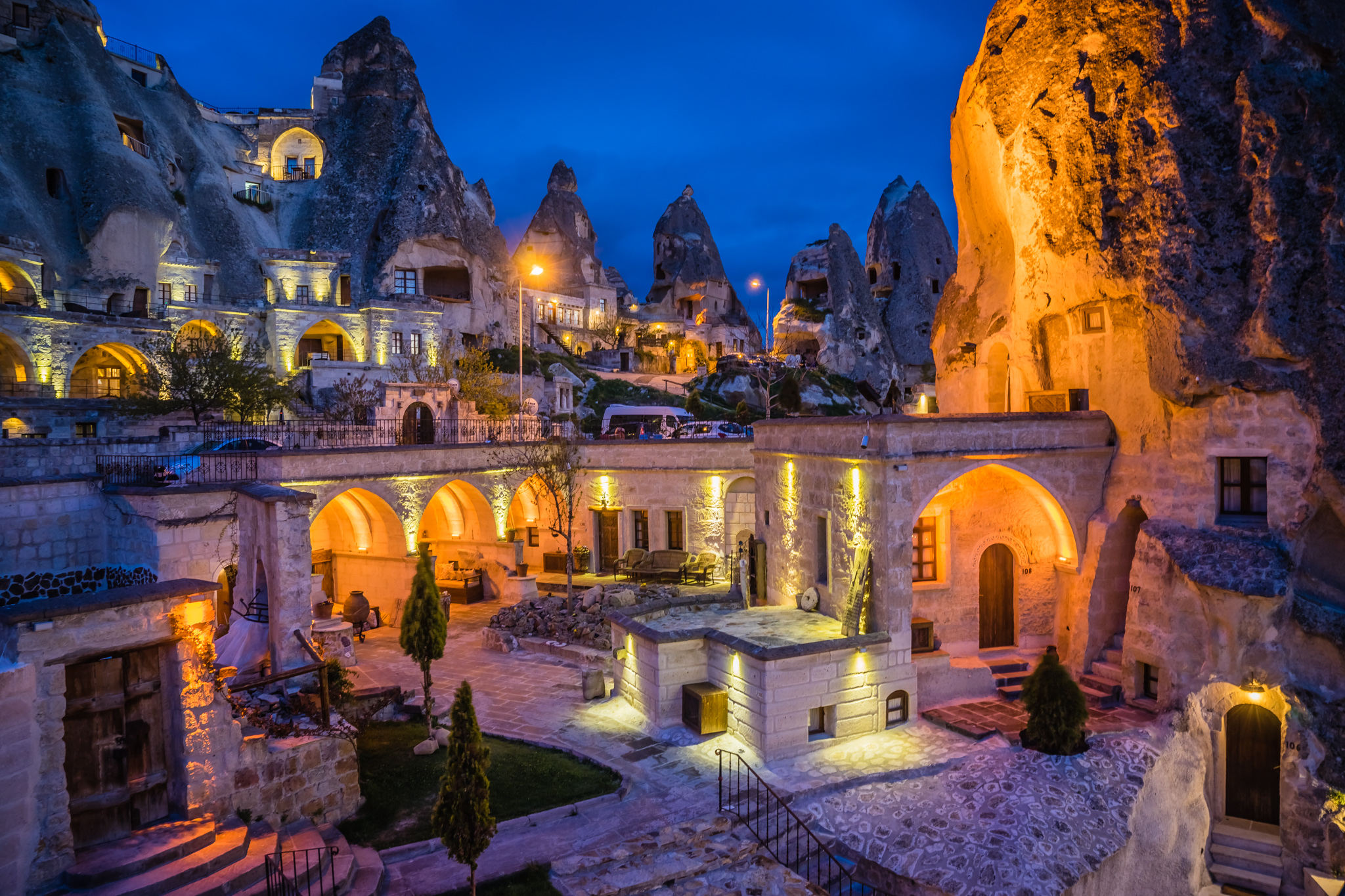
A scene in the courtyard of Cappadocia Cave Suites Hotel
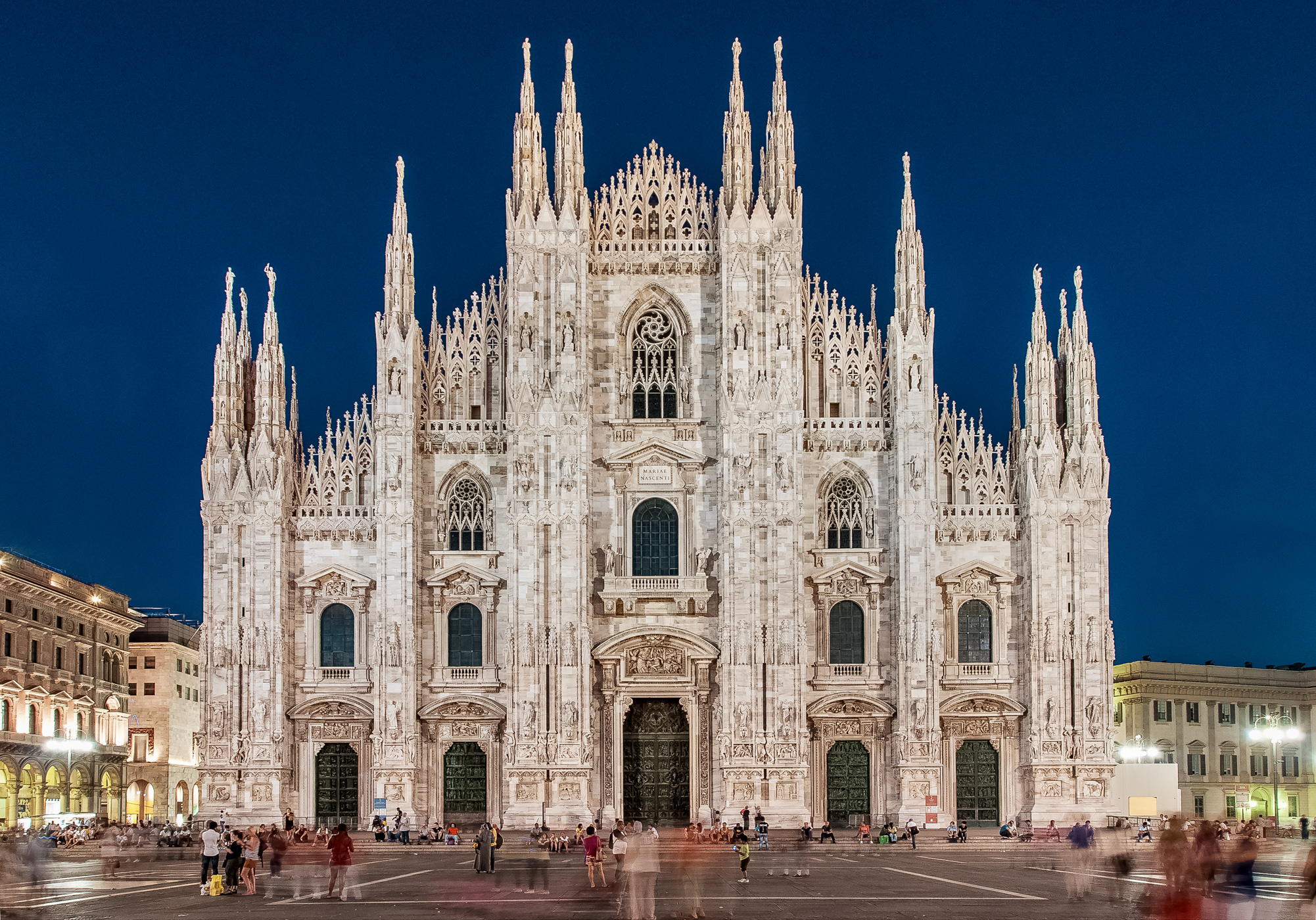
Milan Cathedral as seen from the Piazza.
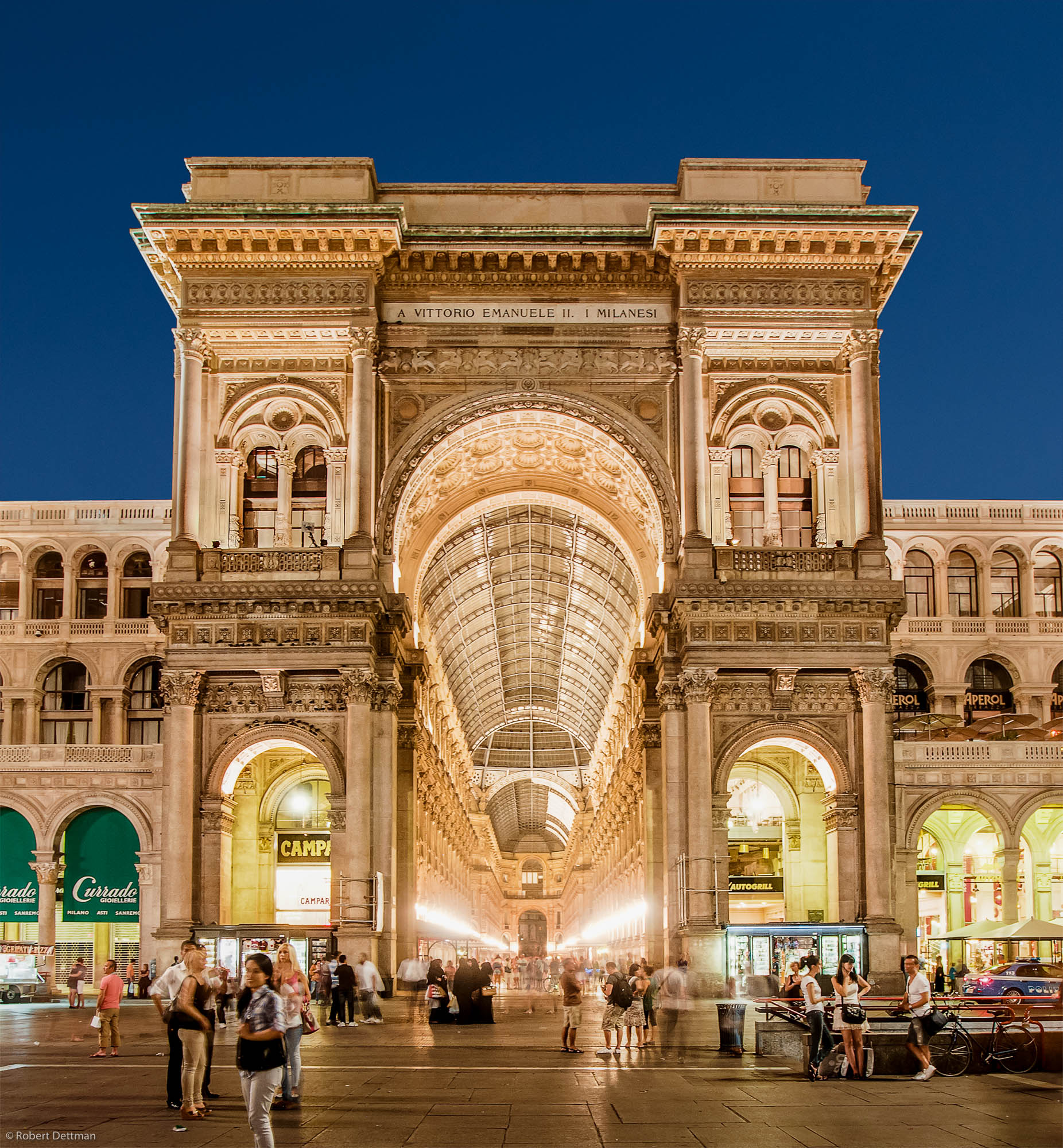
Entrance to the Galleria as seen from Pizza del Duomo, Milan.
Opened in 1867, the Galleria is a major landmark of Milan and is the oldest active shopping mall in Italy. The roof, in cruciform shape, is of steel and glass. It has four barrel vaults that are crowned at their intersection with a dome of monumental scale, 38 metres in diameter.
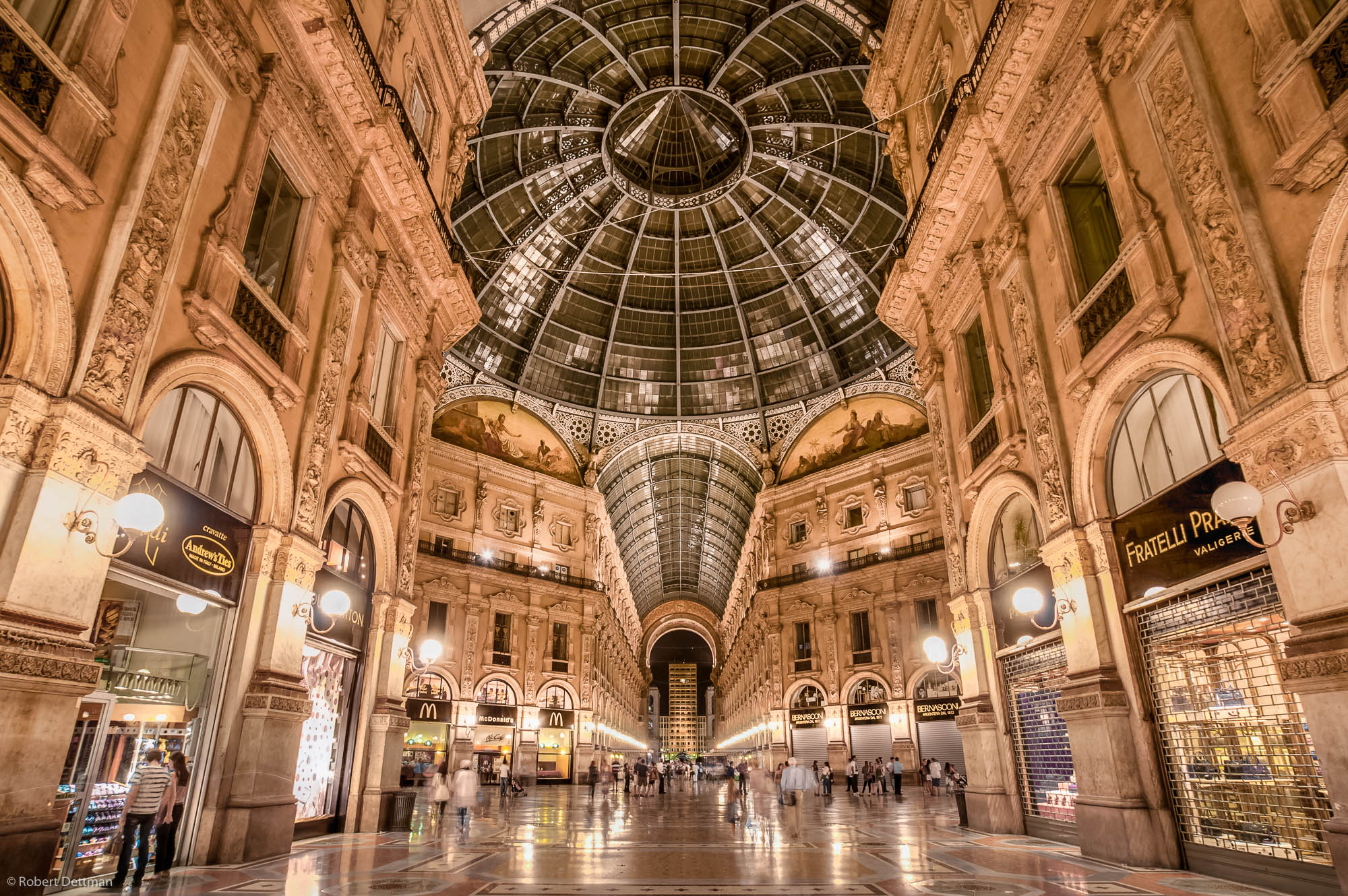
Interior view showing the glazed dome.
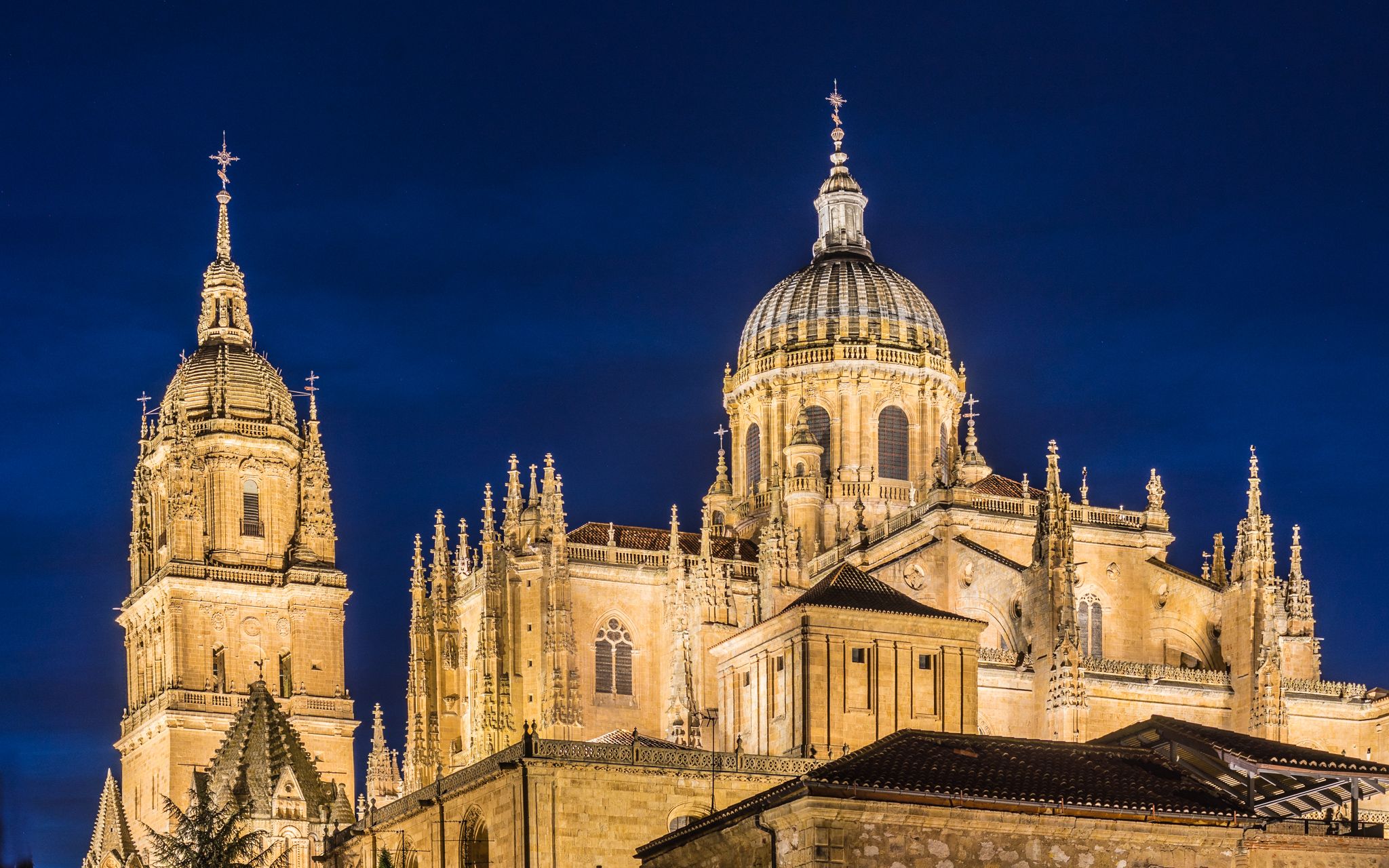
The new cathedral (16th C, consecrated 1733) is attached to the old cathedral (12th-14th C). Its style is Gothic but the dome and tower are Baroque in style. The cathedrals are in the Old City which is a UNESCO World Heritage site. The Old City is home to the University of Salamanca, one of the oldest in Europe, and many beautiful, historic buildings.
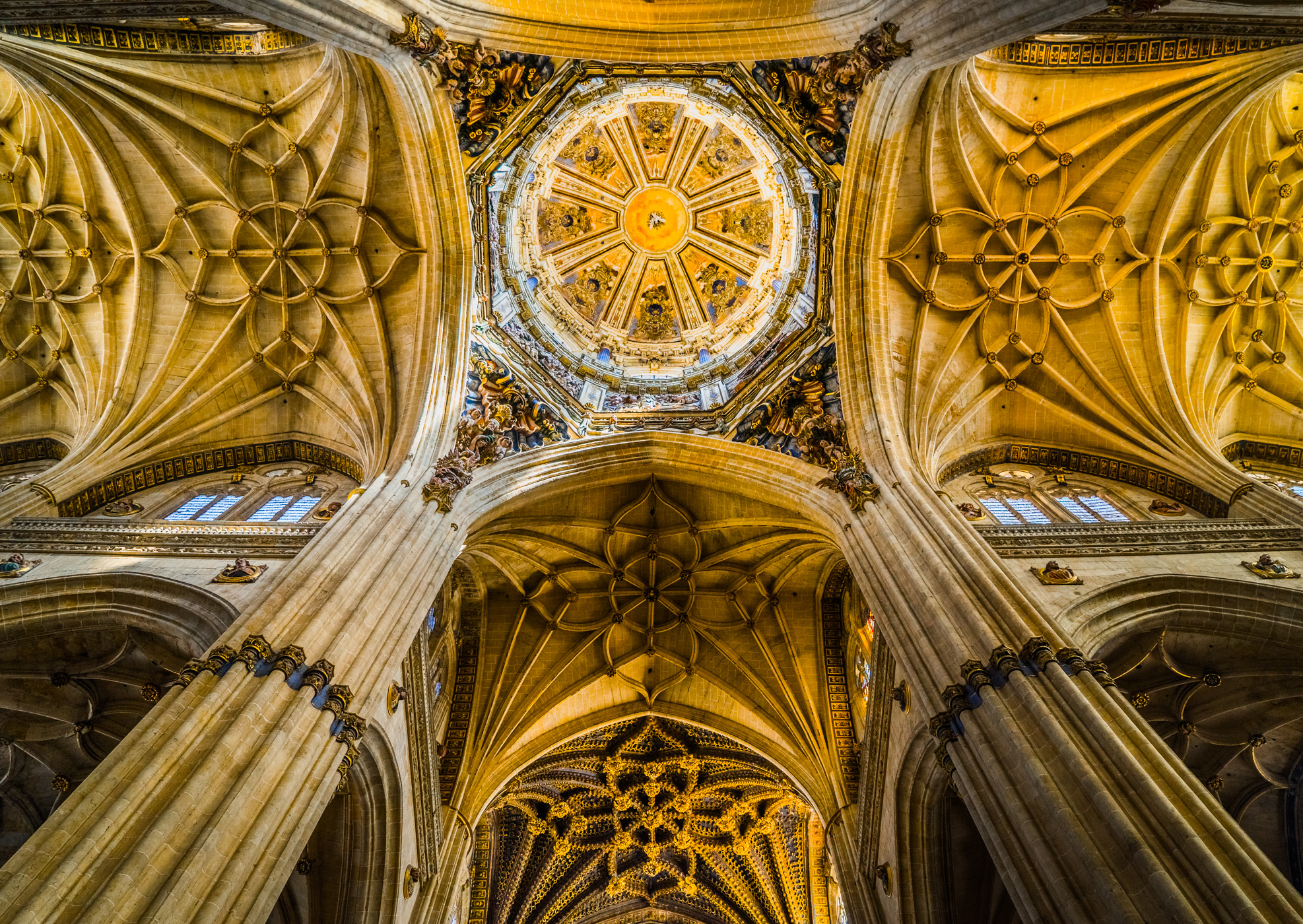
Interior view of the dome over the transept.

The Rossio railway station takes its name from Rossio Square which is nearby. The station has lost much of its importance, but it remains a tourist curiosity and a notable sight in Lisbon. The facade is described as a mix of Romantic and Neo-Manueline (Portuguese late Gothic Revival) elements, which results in the unusual decorative complexity of the facade.
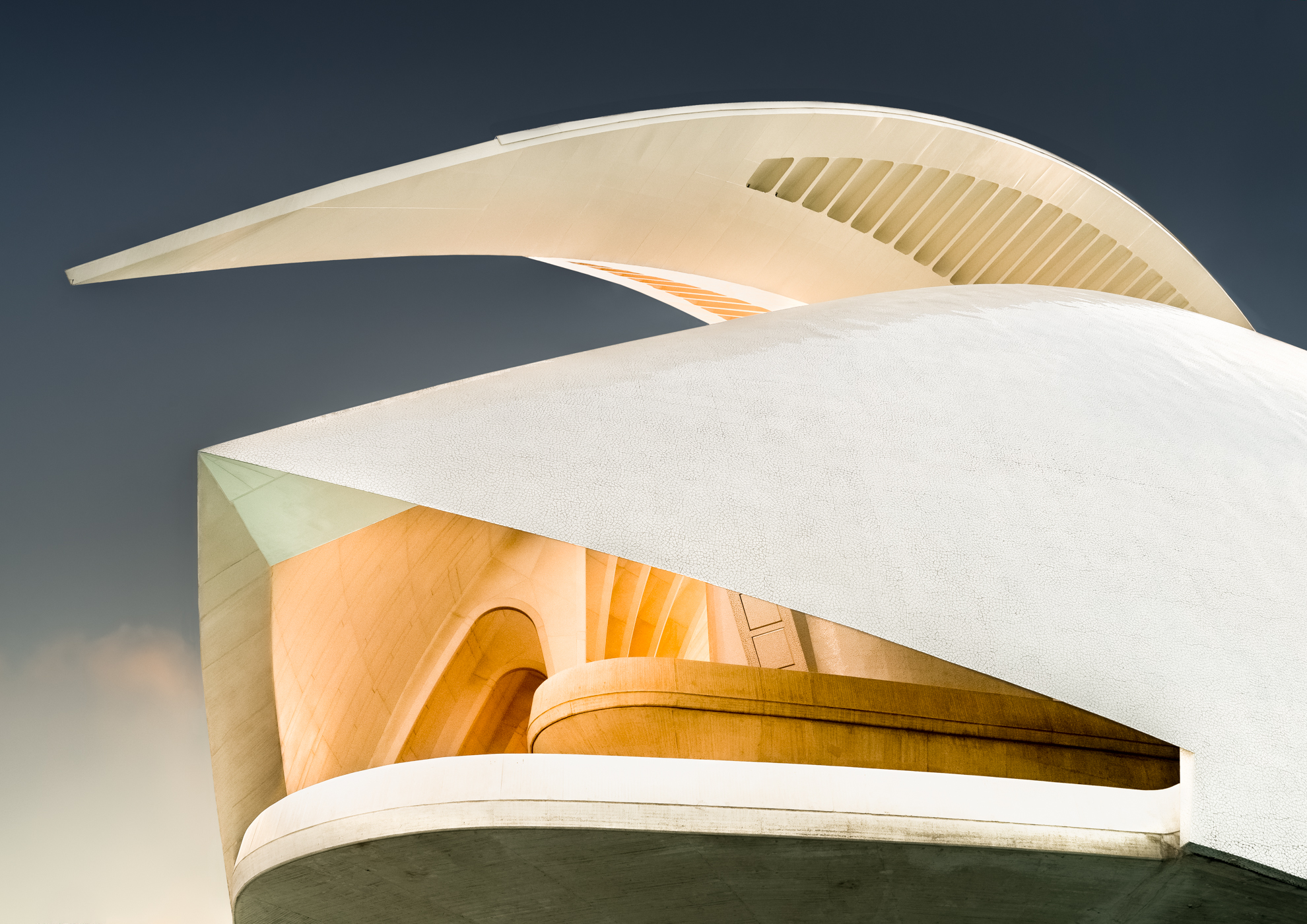
Designed by Valencian architect Santiago Calatrava, this is a study of the Opera House at dusk. The Palau de les Arts Reina Sofía, to give it its Spanish name, is spectacular in size and silhouette. The Spanish rank it with opera houses like those in London, Sydney, Vienna and Milan.
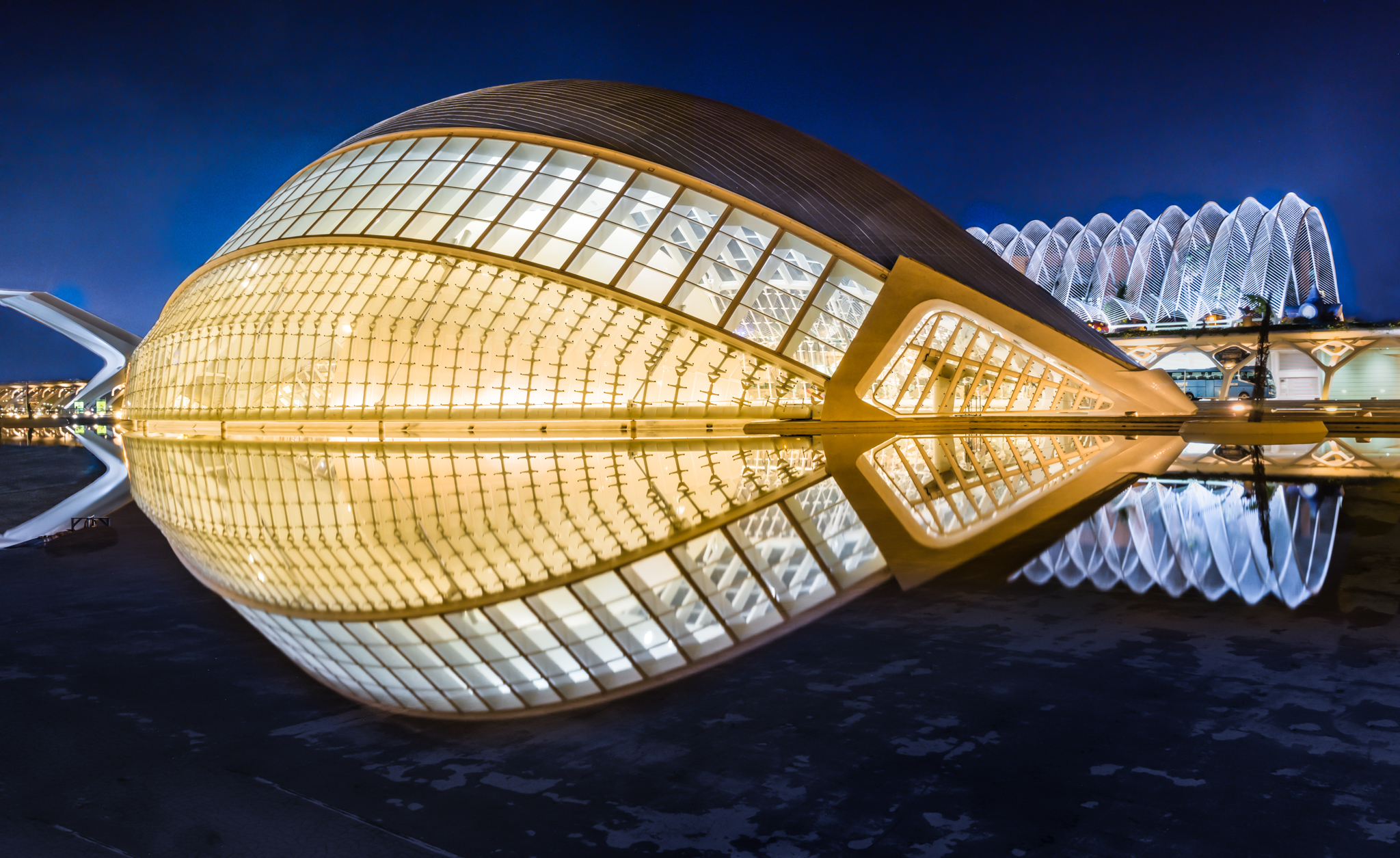
Part of the City of Arts and Sciences complex, Hemisferic, designed by Santiago Calatrava, is a unique structure housing a Laserium, Planetarium and IMAX cinema with over 900 square meters of screen. It is set in a reflective pool.
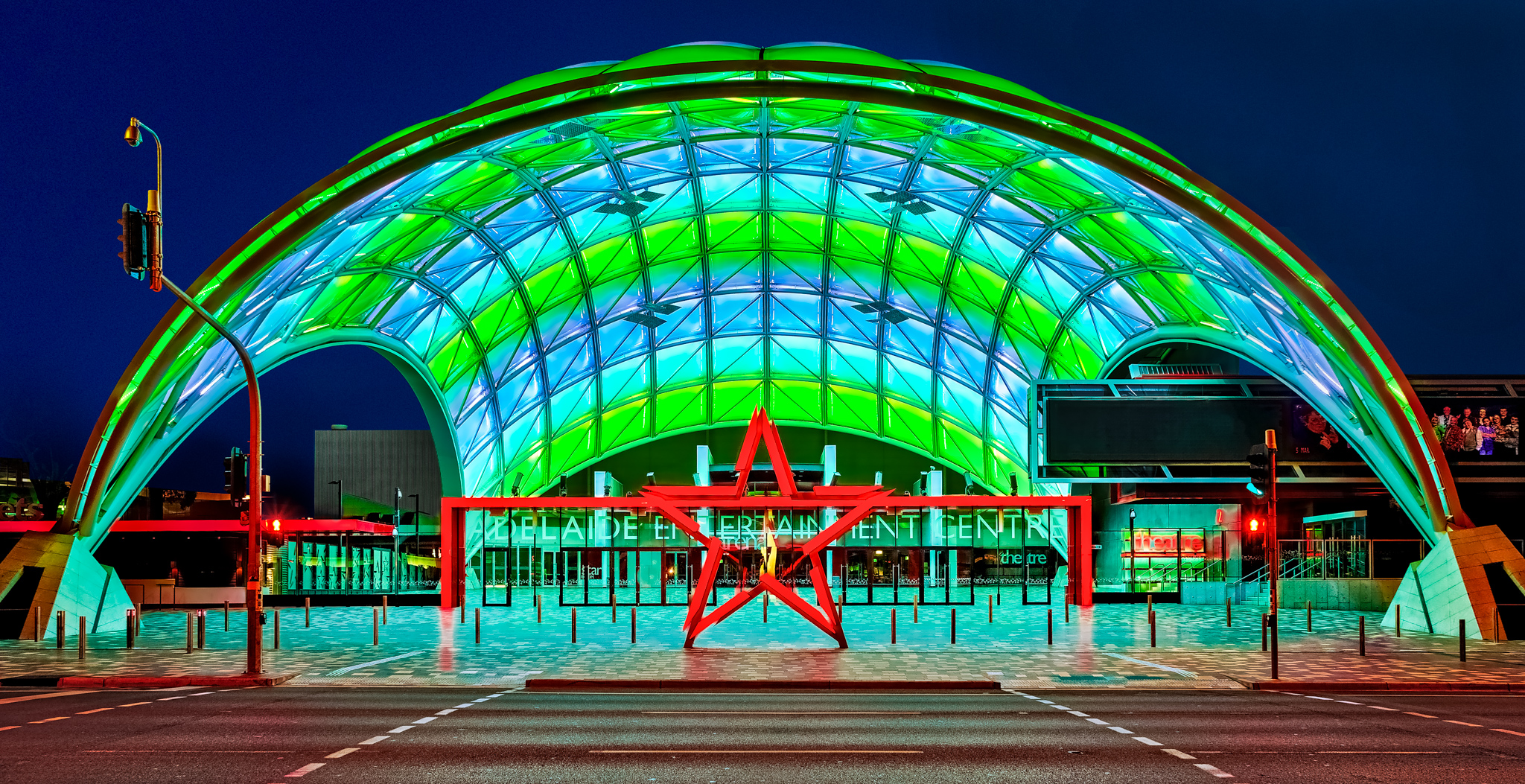
The entrance canopy to the Adelaide Entertainment Centre is known as The Orb. Who knew?
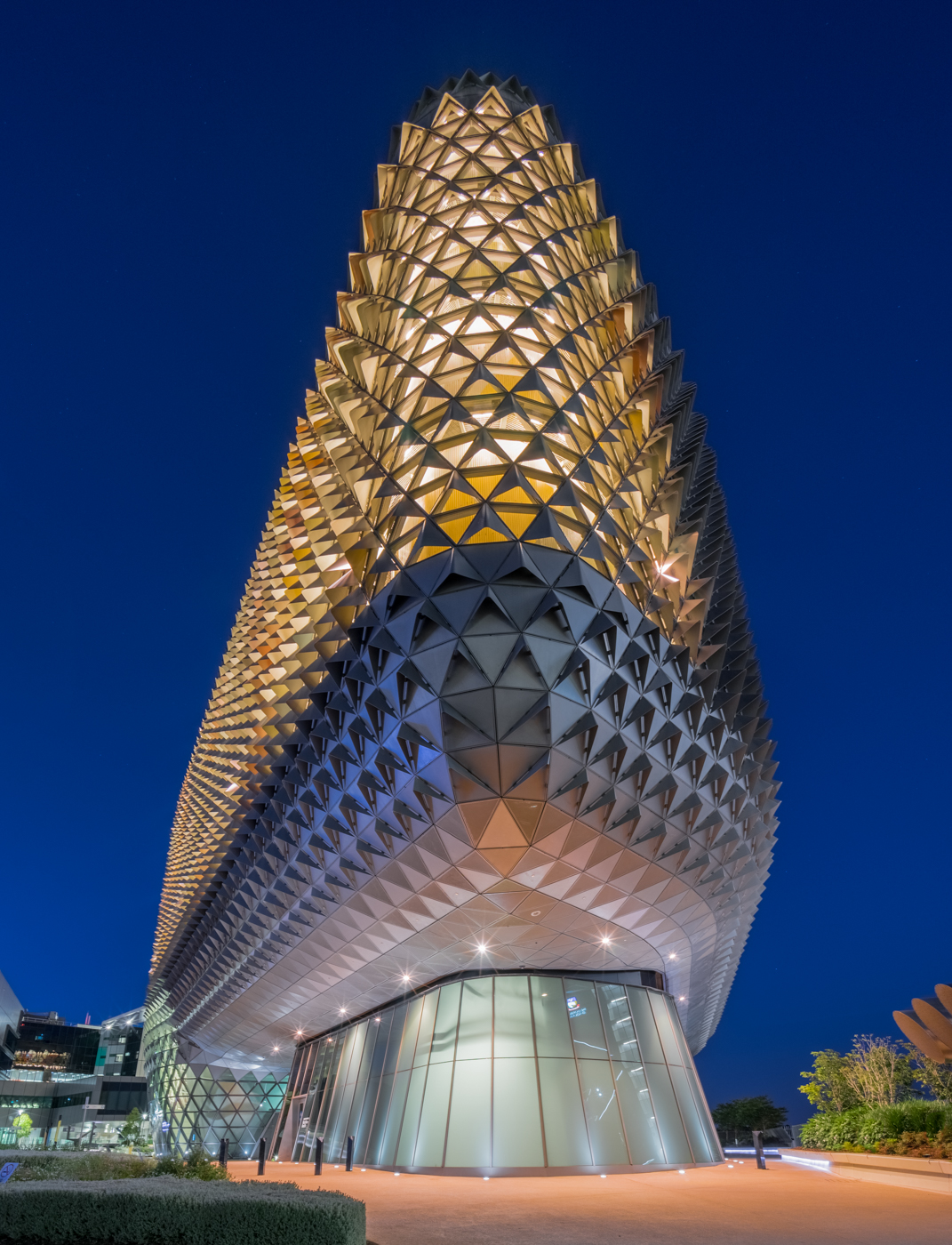
SAHMRI, as it is commonly known, is an independent health and medical research institute in Adelaide, South Australia. The institute is housed in this iconic, purpose-built building located adjacent to the Royal Adelaide Hospital. It was opened in 2013 and houses approximately 600 researchers, both local and international.
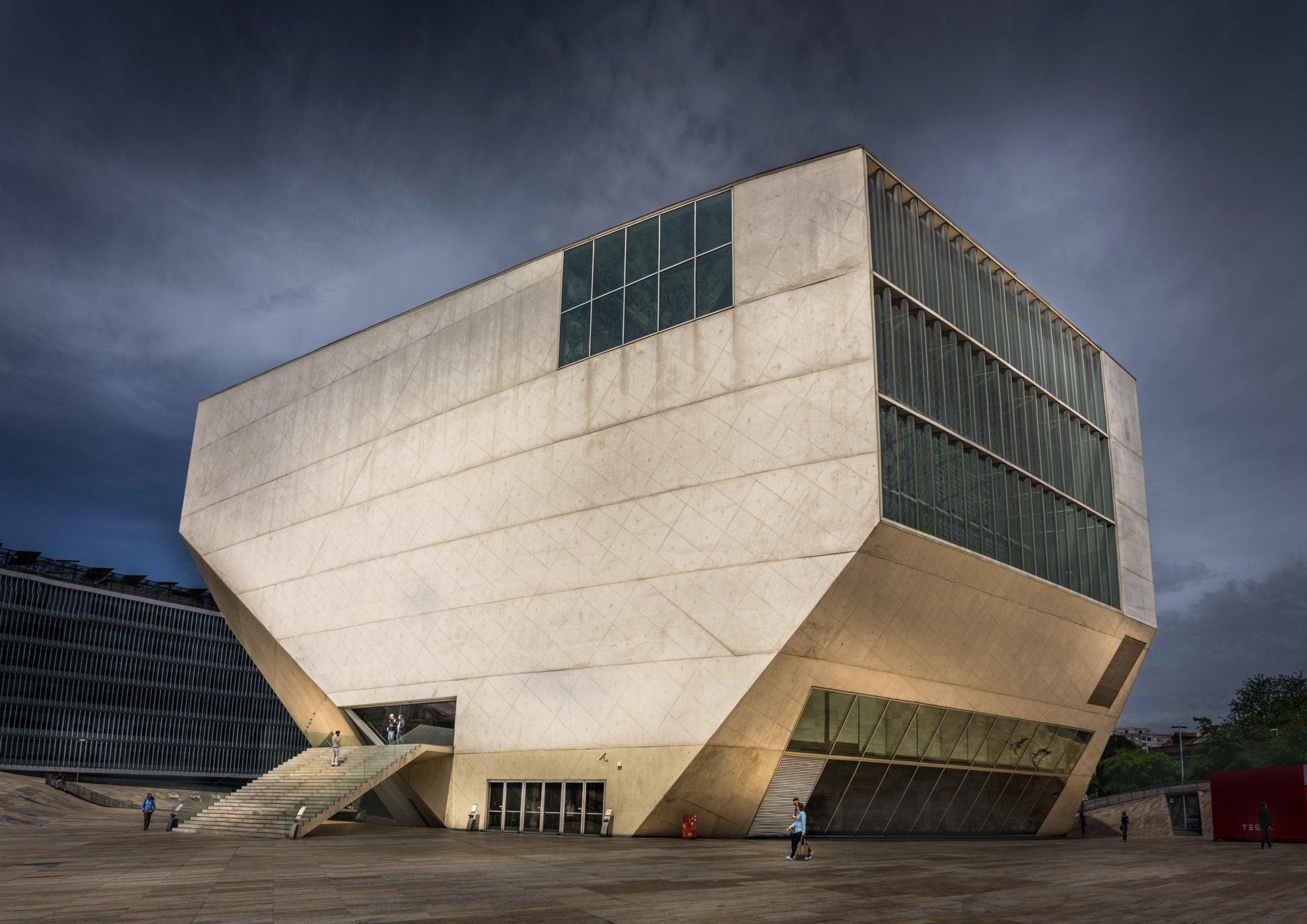
This concert hall by architect Rem Koolhaas is, according to a New York Times article: “set atop a carpet of soft pink travertine, like a cut jewel displayed on a luxurious piece of fabric. At various points, the travertine curves up to cover the structures scattered around the plaza – a bus stop, a cafe, the entrances to an underground garage – as if these practical elements were literally being swept under a rug.” This images is not really a night shot. It was taken in the middle of the day and converted to a nighttime appearance. An interesting tour of the building can be seen via this link.
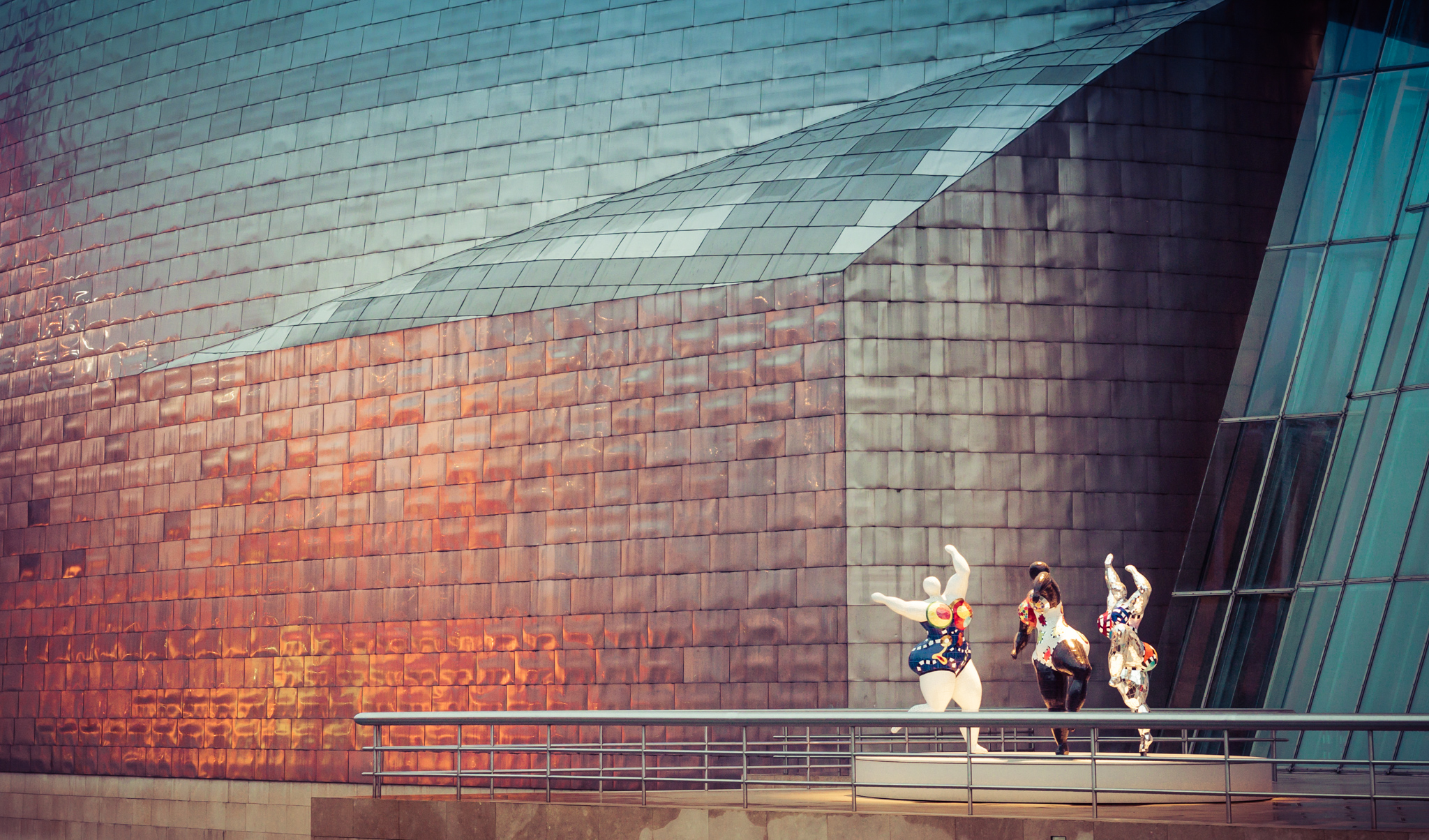
The museum, designed by Frank Ghery, consists of interconnected buildings whose extraordinary free-form titanium-sheathed mass suggests a gigantic work of abstract sculpture. An enormous 130 metre long gallery houses the equally enormous Richard Serra sculpture, “A Matter if Time”. Opened in 1997, the museum was constructed on an old, derelict port area fronting the Nervión River. Aside from its cultural and aesthetic impact, the Guggenheim Bilbao put the city on the world map with upwards of 100,000 people visiting every month. The needs of tourists resulted in the modernising of hotels, restaurants, and public spaces. The city generated about $100 million in taxes in the museum’s first three years of operation.
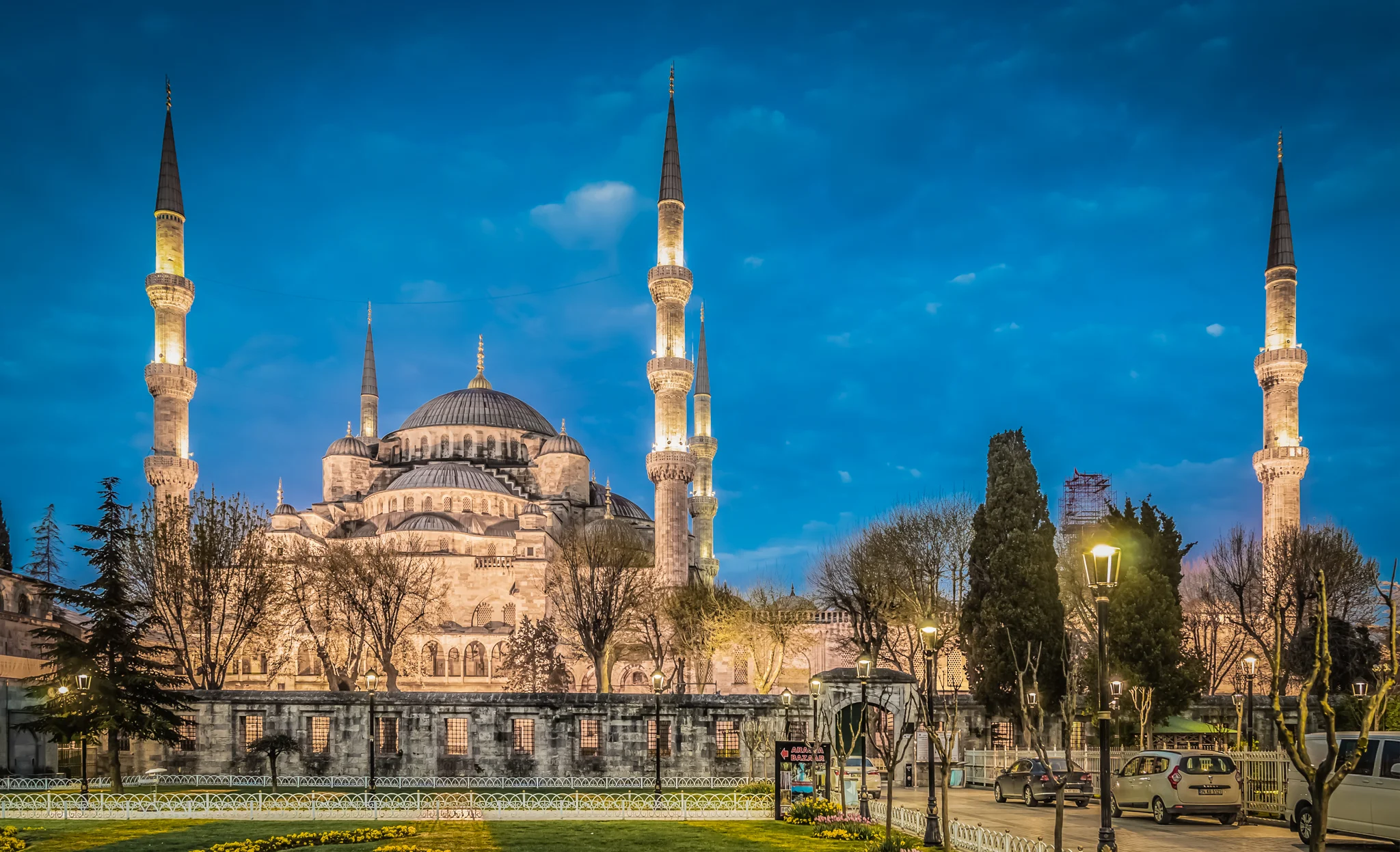
The Blue Mosque (Sultan Ahmet Camii) is known as the Blue Mosque because of the 20,000 hand-painted blue tiles that adorn the interior walls. It was built between 1609 and 1616 and is still an active mosque as well as a significant tourist attraction. Four minarets mark the corners of the mosque and two more minarets are at the corners of the courtyard which includes a large fountain.
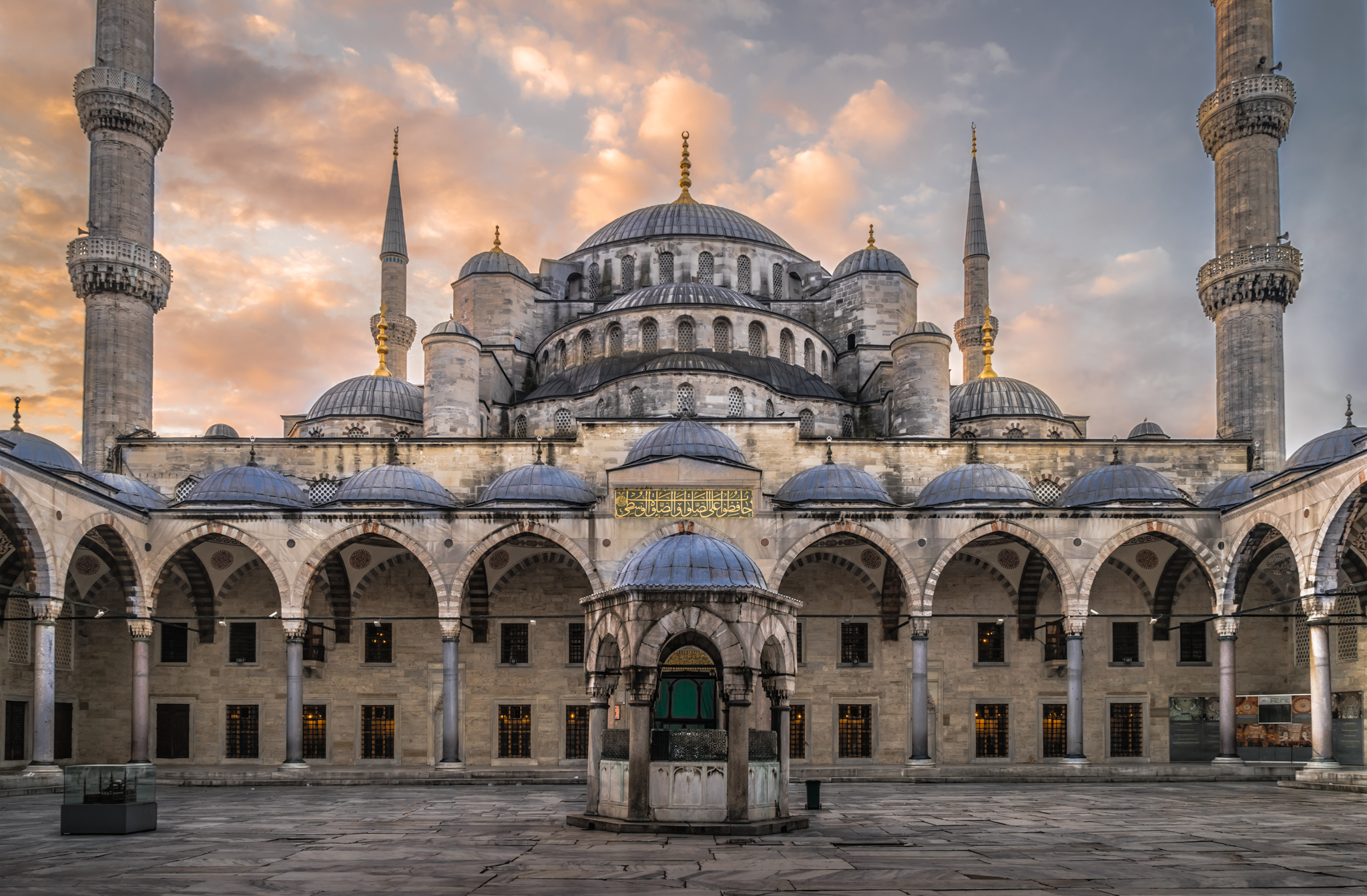
Interior view of the courtyard showing the fountain and mosque beyond.
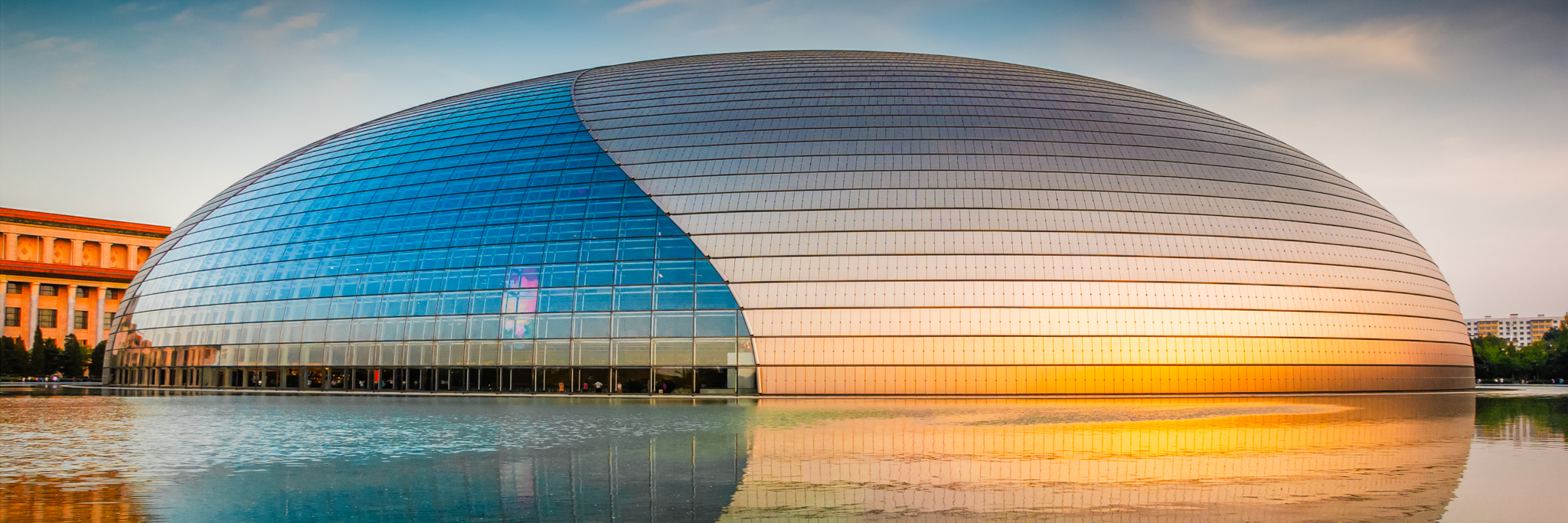
Designed by French architect Paul Andreu, the building is a titanium and glass clad “egg” set in an artificial lake. Because of its location near Tiananmen Square, the Great Hall of the People and the Forbidden City, the theatre's futuristic design created considerable controversy. But the architect’s argument that Beijing, as the capital city, must also include modern architecture, won over the authorities. Interestingly, there is no visible entrance from the level of the artificial lake. Instead the building is entered via a grand hallway that passes under the water.

The Auditorium Parco della Musica (Music Auditoria in the Park) is a large public music complex in Rome, Italy, with three indoor concert halls and an outdoor theatre that recalls ancient Greek and Roman performance spaces. It was designed by Italian architect Renzo Piano. The three halls are separate structures arranged around the outdoor theatre and connected by a continuous lobby.
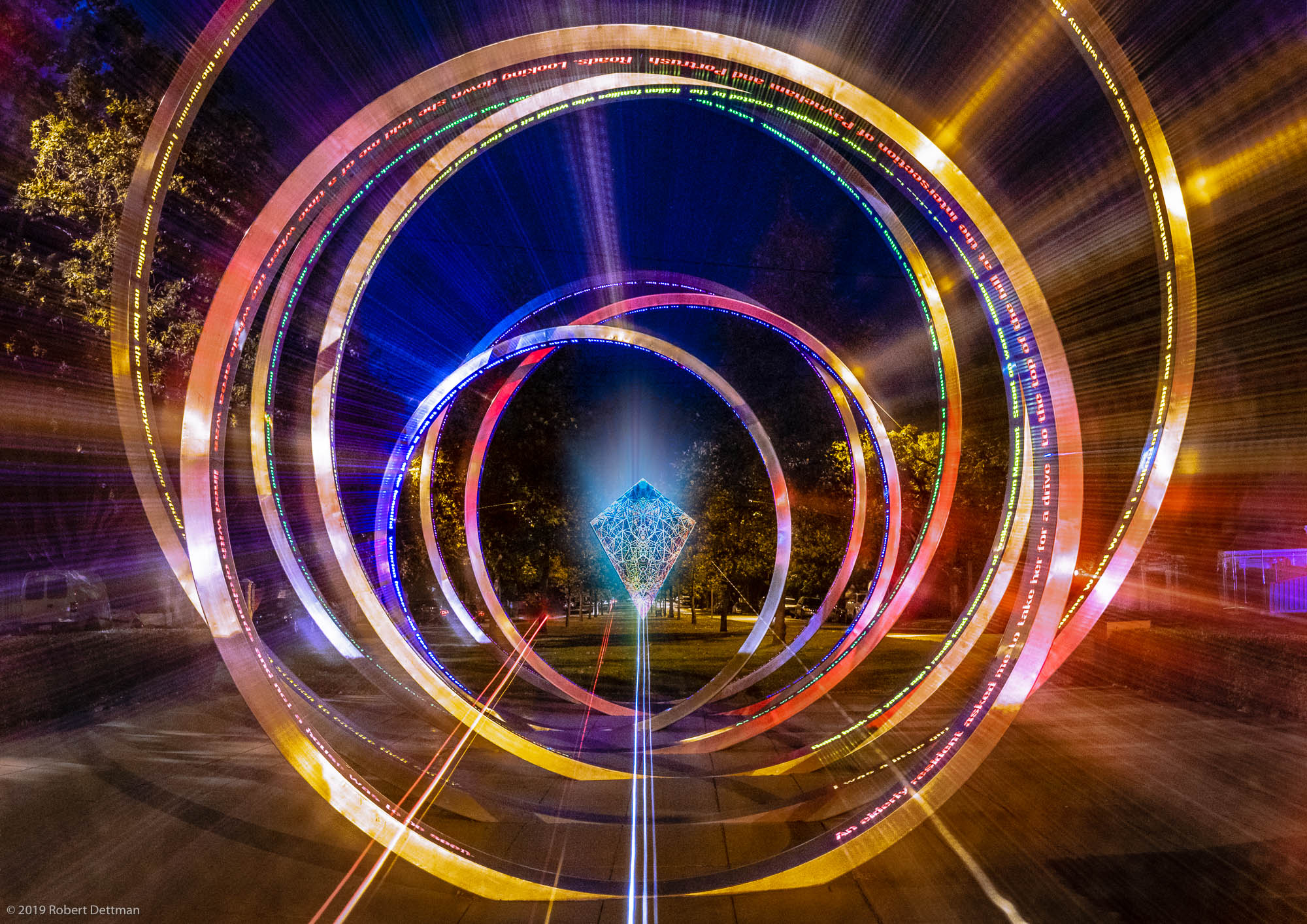
The “Spectrum” sculpture in Norwood, South Australia, by artist Craige Andre, 2010. The photograph was taken at night while zooming during a long exposure. It was then processed with some creative interpretation.
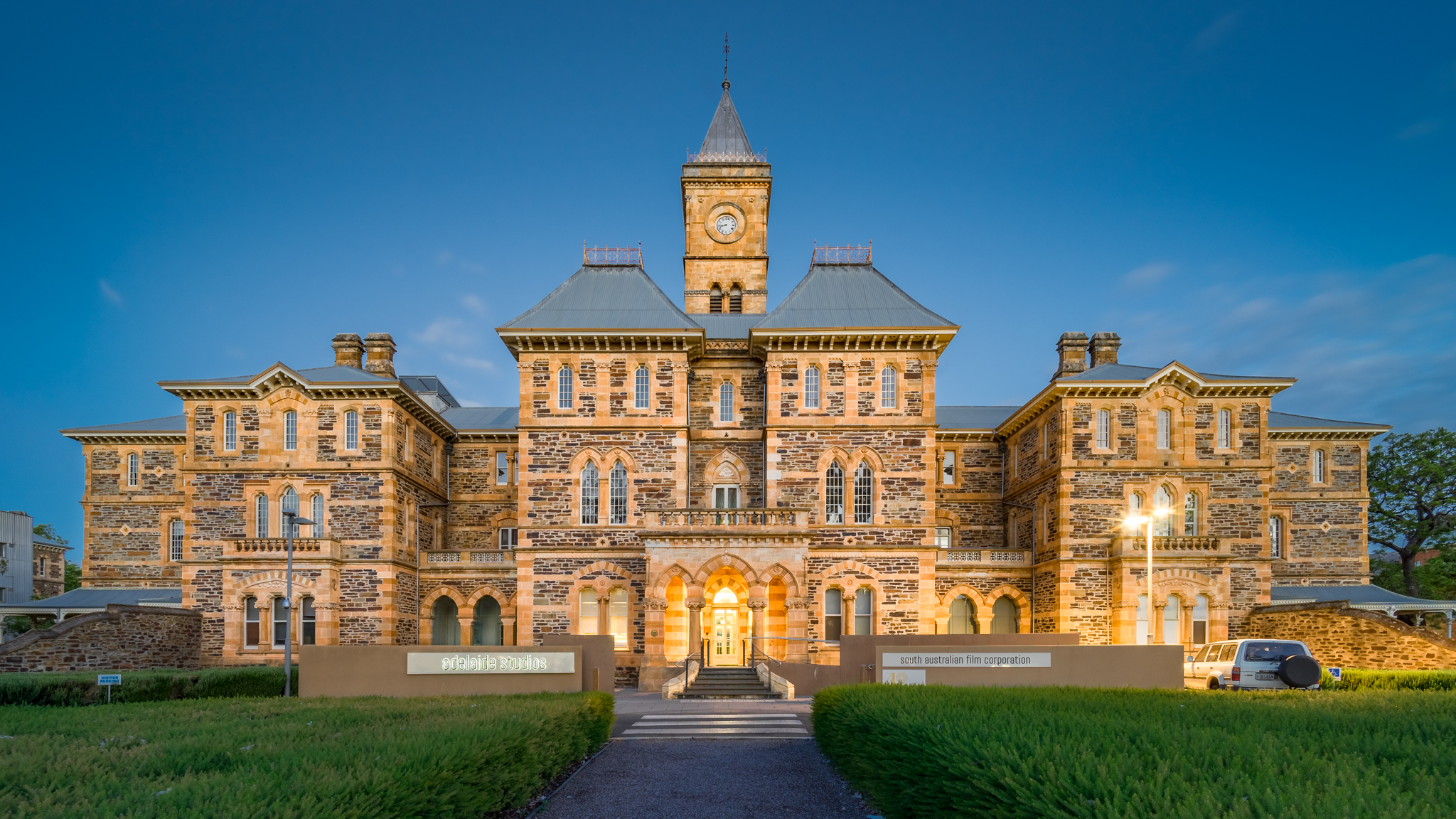
This 19th century building was originally the principal building of a mental hospital. It was refurbished and new film studios including sound stages and mixing suites were added at the rear. In 2011 it reopened as the home of the South Australian Film Corporation.



















A scene in the courtyard of Cappadocia Cave Suites Hotel
Milan Cathedral as seen from the Piazza.
Entrance to the Galleria as seen from Pizza del Duomo, Milan.
Opened in 1867, the Galleria is a major landmark of Milan and is the oldest active shopping mall in Italy. The roof, in cruciform shape, is of steel and glass. It has four barrel vaults that are crowned at their intersection with a dome of monumental scale, 38 metres in diameter.
Interior view showing the glazed dome.
The new cathedral (16th C, consecrated 1733) is attached to the old cathedral (12th-14th C). Its style is Gothic but the dome and tower are Baroque in style. The cathedrals are in the Old City which is a UNESCO World Heritage site. The Old City is home to the University of Salamanca, one of the oldest in Europe, and many beautiful, historic buildings.
Interior view of the dome over the transept.
The Rossio railway station takes its name from Rossio Square which is nearby. The station has lost much of its importance, but it remains a tourist curiosity and a notable sight in Lisbon. The facade is described as a mix of Romantic and Neo-Manueline (Portuguese late Gothic Revival) elements, which results in the unusual decorative complexity of the facade.
Designed by Valencian architect Santiago Calatrava, this is a study of the Opera House at dusk. The Palau de les Arts Reina Sofía, to give it its Spanish name, is spectacular in size and silhouette. The Spanish rank it with opera houses like those in London, Sydney, Vienna and Milan.
Part of the City of Arts and Sciences complex, Hemisferic, designed by Santiago Calatrava, is a unique structure housing a Laserium, Planetarium and IMAX cinema with over 900 square meters of screen. It is set in a reflective pool.
The entrance canopy to the Adelaide Entertainment Centre is known as The Orb. Who knew?
SAHMRI, as it is commonly known, is an independent health and medical research institute in Adelaide, South Australia. The institute is housed in this iconic, purpose-built building located adjacent to the Royal Adelaide Hospital. It was opened in 2013 and houses approximately 600 researchers, both local and international.
This concert hall by architect Rem Koolhaas is, according to a New York Times article: “set atop a carpet of soft pink travertine, like a cut jewel displayed on a luxurious piece of fabric. At various points, the travertine curves up to cover the structures scattered around the plaza – a bus stop, a cafe, the entrances to an underground garage – as if these practical elements were literally being swept under a rug.” This images is not really a night shot. It was taken in the middle of the day and converted to a nighttime appearance. An interesting tour of the building can be seen via this link.
The museum, designed by Frank Ghery, consists of interconnected buildings whose extraordinary free-form titanium-sheathed mass suggests a gigantic work of abstract sculpture. An enormous 130 metre long gallery houses the equally enormous Richard Serra sculpture, “A Matter if Time”. Opened in 1997, the museum was constructed on an old, derelict port area fronting the Nervión River. Aside from its cultural and aesthetic impact, the Guggenheim Bilbao put the city on the world map with upwards of 100,000 people visiting every month. The needs of tourists resulted in the modernising of hotels, restaurants, and public spaces. The city generated about $100 million in taxes in the museum’s first three years of operation.
The Blue Mosque (Sultan Ahmet Camii) is known as the Blue Mosque because of the 20,000 hand-painted blue tiles that adorn the interior walls. It was built between 1609 and 1616 and is still an active mosque as well as a significant tourist attraction. Four minarets mark the corners of the mosque and two more minarets are at the corners of the courtyard which includes a large fountain.
Interior view of the courtyard showing the fountain and mosque beyond.
Designed by French architect Paul Andreu, the building is a titanium and glass clad “egg” set in an artificial lake. Because of its location near Tiananmen Square, the Great Hall of the People and the Forbidden City, the theatre's futuristic design created considerable controversy. But the architect’s argument that Beijing, as the capital city, must also include modern architecture, won over the authorities. Interestingly, there is no visible entrance from the level of the artificial lake. Instead the building is entered via a grand hallway that passes under the water.
The Auditorium Parco della Musica (Music Auditoria in the Park) is a large public music complex in Rome, Italy, with three indoor concert halls and an outdoor theatre that recalls ancient Greek and Roman performance spaces. It was designed by Italian architect Renzo Piano. The three halls are separate structures arranged around the outdoor theatre and connected by a continuous lobby.
The “Spectrum” sculpture in Norwood, South Australia, by artist Craige Andre, 2010. The photograph was taken at night while zooming during a long exposure. It was then processed with some creative interpretation.
This 19th century building was originally the principal building of a mental hospital. It was refurbished and new film studios including sound stages and mixing suites were added at the rear. In 2011 it reopened as the home of the South Australian Film Corporation.